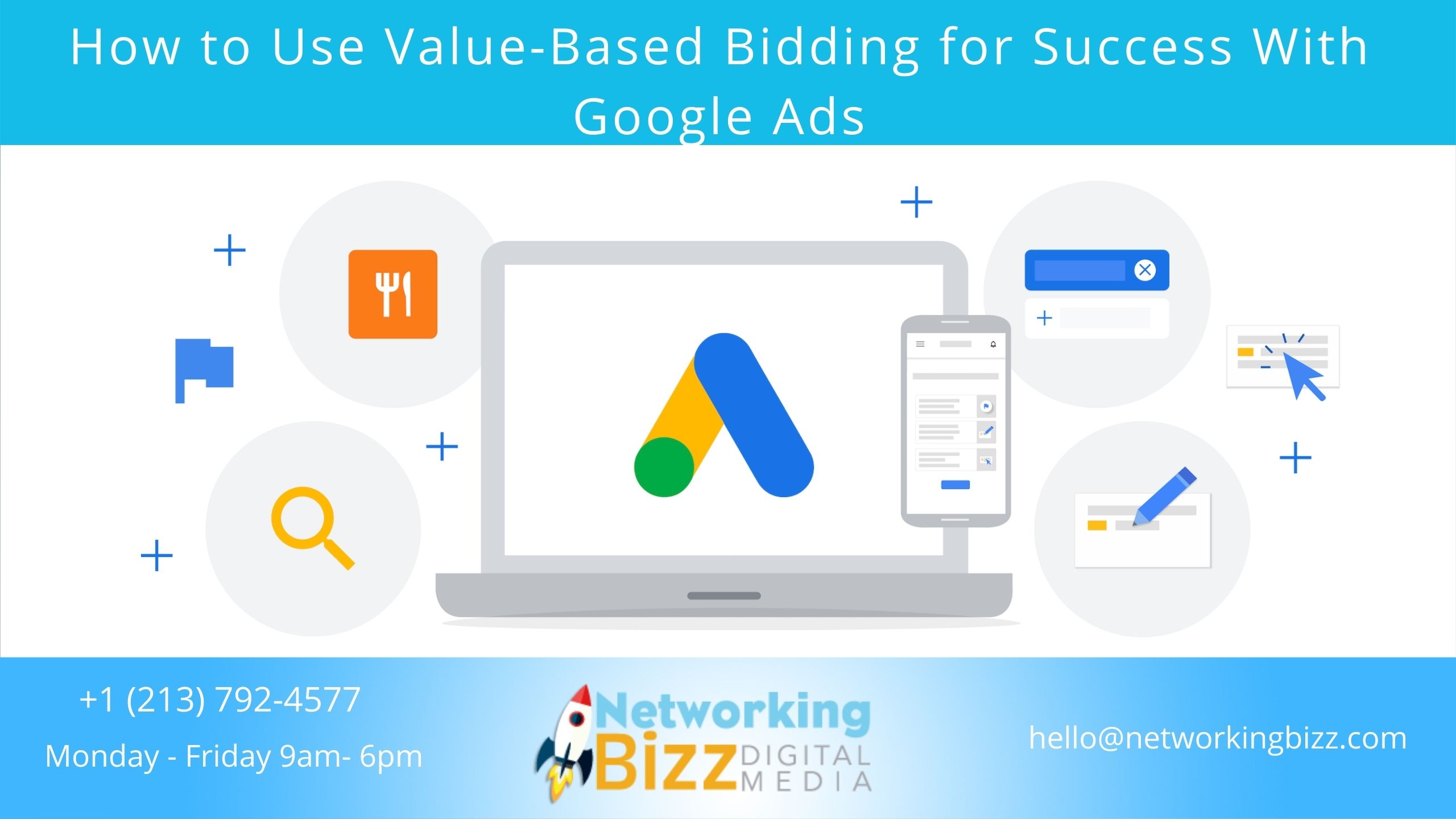Google’s automated smart bidding options have come a long way over the years. In fact, our best practice used to be to avoid them in favour of more manual CPC management for increased control, or third-party bid management platforms that performed better.
That is no longer the case. Smart bidding is extremely commonplace now and much more effective than ever before.
Still, for years, smart bidding strategies have been aimed at driving KPIs like more clicks, more conversions, or more conversions at a specific cost-per-action (CPA). Heading into 2021, Google made a strong push to change that. To get smarter. They called it Smart Bidding 2.0.
Smart Bidding 2.0 refers to value-based bidding. This is bidding for value…not volume. Not all conversions are created equal, after all.
Implementing Value-Based Bidding
Conceptually, value-based bidding makes perfect sense. Driving revenue is almost always the ultimate goal.
That said, bidding for higher revenue value historically has been reserved for e-commerce advertisers where it’s clear through e-commerce tracking what revenue returned is. Lead generation advertisers traditionally focus on maximizing conversion volume while aiming for a specific target CPA goal.
Because of this, Target CPA and Maximize Conversion (Target CPA) are favourite smart bidding strategies for lead generation businesses. This is because it’s often harder to determine the value of a lead. This is a mental block that should be moved past.
So, how does bidding with value in mind affect performance?
Why Use Value-Based Bidding
As I mentioned, not all conversions are the same. For a lead generation business, there might be many conversion actions to consider:
- Lead form submissions
- Free trial signups
- Ebook downloads
- Whitepaper downloads
- Offline tracked conversion actions
- Or…hard revenue recognized and reported back via closed-loop reporting
When this is the case, a few things can happen. Either some conversion actions get ignored in favour of the primary conversion. This would tell the smart bidding strategy to ignore those softer conversions completely and only seek the best conversions, which will hurt the business over time because those soft conversions do have value.
Or lump them together and bid equally towards all. Whitepaper downloads might be much easier to earn, so Google might go get those, even though they are worthless to the business, decreasing return. An equal bid for different conversion action values can cause missed revenue opportunities.
When to Switch to a Value-Based Bid Strategy
The short answer, now.
The best reason not to switch is if your volume is low. If you have low conversion volume due to the nature of your business, your budget, or because your campaigns are brand new, it might not be time to switch yet. However, in most cases, we recommend using a value-based bid strategy.
How to Switch to a Value-Based Bid Strategy
Value-based bidding is for anyone and everyone at this point. There are very few exceptions. Even if your business is small and has a single conversion point, you can still apply Value Rules (see below) to modify your bids based on how the conversion was completed and who converted.
If your business has multiple conversion actions, all that is required to get started is determining a value for each. This is where the mental block I mentioned before comes in.
“I don’t know the value of a lead.”
This is a common issue, but one that can be easily navigated. It is not necessary to know the exact dollar value of each conversion action you are tracking. All you need to know is their value relative to each other.
If you understand a rough estimate of their value relative to each other, you can make up a value to communicate to Google which conversion you care the most about. For example:
- Free trial signups (most important) – $100
- Lead form submissions (hard conversion) – $75
- Ebook downloads (soft conversion) – $25
- Whitepaper downloads (soft conversion) – $25
Google will see these values and understand that free trials are 4x more valuable than whitepaper downloads. If you can estimate a value like this, adding that to your conversion actions in Google Ads will immediately improve the efficiency of your bidding.
Types of Smart Bidding Strategies
When bidding for volume, advertisers look to Maximize Conversions and Target CPA. But for value-based bidding, the options are Maximize Conversion Value and Target ROAS.
Maximize Conversion Values
This strategy works exactly how the name suggests. Google aims to return you the maximum revenue possible given your budget. It will take into account numerous signals like user location, expected CPC, time of day, and intent signals with the goal of getting the highest return possible.
Target ROAS
Target ROAS, also referred to as Maximize Conversion Value (Target ROAS), takes a similar approach, but while attempting to respect a goal ROAS that you can define. This is a key difference as it may limit your total return, but efficiency is often important to allow profitability.
Tips for Using Value-Based Bids
In my experience, value-based bidding works and works well. But there are best practices to follow to get the most out of it, just like anything else. Here are a few things to keep in mind.
Provide Google With Enough Volume
Like all smart bidding, you need data. Google’s algorithm will have a hard time optimizing your bids if your campaign is getting three conversions a month. If the volume is that low, consider a more simple bid strategy not aimed at conversion volume or value, like Maximize Clicks.
If this is the case, another option is to reconsider how granular your campaigns are organized. If they are overly granular, you may be better off grouping some campaigns together to allow Google to collect more data and optimize more efficiently.
Google recommends having at least 30 conversions in a month to use these strategies. They up that to 50 if you are using Target ROAS.
Give It Time
When evaluating performance, don’t make decisions on performance and optimization too quickly. Again, Google needs data, and so do you. Beyond just those 30 and 50 conversion volume rules, we recommend viewing data over several months (keeping in mind season trends) when making decisions.
Use Value Rules
Use Value Rules to add more detail to your conversion value. Again, not all conversions have the same value. But take it one step further and define within a single conversion action (free trial signups, for example) that conversions from desktops are 30% more valuable on average than those same conversions from mobile. Value Rules allow you to layer in adjustments for that. In addition to device modifiers, you can also modify them by audience segments and rules.
Whether you are adding more detail to a variety of conversion actions or just trying to provide some feedback to Google on your single-tracked conversion action, Value Rules allow you to communicate even more clearly what you want the algorithm to do for you.
Value-Based Bidding Is an Effective Strategy
Google’s machine learning is getting smarter all the time. Smart bidding is leaps and bounds ahead of where it was in years past, and Smart Bidding 2.0 (value-based bidding) is just another strong step toward leveraging that to get more out of your advertising budget. If you haven’t experimented with them in the past, perhaps because you’re running into a mental block around how to assign a value to your conversions, revisit them and see if you can give Google more data points for the algorithm to take into account. Start driving more value, instead of just more volume.


